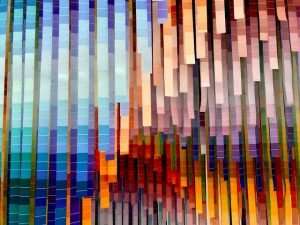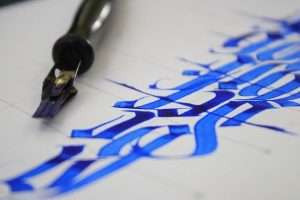I’ve received many requests for information on how to start painting and what to buy. There’s already a lot of info on my site, but there are still some things that need further explanation or are just buried between the lines. So here’s a new blog.
There are several ways to start painting. You can take a class, you can buy the necessary materials and learn from books or online, you can buy kits with all the materials and instructions included, you can watch videos and DVDs, or you can just go for it and start painting whatever moves you.
Tons of people have started with “just going for it” – just putting paint on canvas – yet they would have saved a lot of time by watching some instructional videos first. This is because they had no idea how difficult it was to make art look good.
The first thing to understand is that there is no such thing as “artistic talent”. You need skill, practice, knowledge and understanding, but these only come with constant hard work. No one has ever become an artist unless they were willing to put in 10 years of hard work before their art became even remotely good looking. I’m not saying this because I want people to keep buying my classes and DVDs (which I do), I
The art of painting has been around since the beginning of time (or so it feels). But the way we view paintings has changed. In the past, people used to think paintings were a form of religion. Now we understand that they are more like a snapshot of history or a window into an artist’s soul.
Composition is the arrangement of shapes and colors in a painting. It’s what holds the whole picture together, along with your use of color and perspective.
When you’re learning how to start painting, you will want to practice these techniques to improve your composition skills:
The Rule of Thirds – divides your canvas into three sections vertically and three sections horizontally, creating nine boxes. Place important elements where the lines intersect. The Golden Ratio – Leonardo da Vinci found this ratio to be aesthetically pleasing. Using your eye as a guide, compare one section to another section by comparing their lengths side-by-side. The Rule of Odds – when composing your painting, create odd numbers by adding one extra object to your scene (e.g., three people instead of two). This adds interest to your composition and keeps it from being too boring or too symmetrical.
Composition is only part of learning how to start painting effectively; you’ll
It’s easy to think of painting as an incredibly difficult skill to master. And it is, but you can learn it! I wanted to learn painting because I wanted a hobby. And I wanted to be able to paint my own paintings on canvas or paper that are good enough that people would want to buy them. So I set out on a journey of learning.
I read books and watched youtube videos and talked with people at art stores and even attended a few classes, and now after several months of learning, I have created many paintings that are good enough that people have bought them. This blog is where I share the things I’ve learned while trying to paint better. It includes how-to-paint tutorials, my own painting process and advice from other painters, and other useful information for someone who wants to start painting.
The first thing to learn is how to hold and control the brush. I am going to assume you already have a paint brush, so lets move on to the next step.
Take your paint brush in your hand. If you are right handed put the thumb of your right hand on top of the shaft and the rest of your fingers on the bottom of the shaft, encasing it completely.
If you are left handed do not despair; simply put your thumb on the bottom of the paintbrush handle and rest your other fingers on top of the handle.
Now with this grip in place spread all your fingers except for your index finger slightly away from each other. Your index finger should be resting against the side of the handle, not wrapped around it.
Your thumb should be placed as high up on the handle as it will comfortably go. Place it as high up on the handle as possible without causing any discomfort or awkwardness.*
Place both of your forefingers either side of the brush head, with your middle finger resting against the side of the handle (see image). Place them at an angle where they are more or less parallel to each other but they are also roughly aiming down towards where you would like to place your stroke (see image).
Finally,
There is a great number of artists who are in the need of inspiration and knowledge. They are eager to know how to become better in their work. The most important thing that needs to be thought about is how one can get better at art. The following tips will help you make your paintings better and more attractive even if you are not sure where to start or what you should do next.
One should get as much information as possible about the past masters of painting, as well as the present ones, so that one can learn from them and be inspired by their work. It is important for a beginner to know about the previous experience that other artists have had, so that they can avoid their mistakes and use their triumphs to their advantage. Talking with other artists or reading books on art can provide a great deal of insight into this matter. A beginner must also learn about different techniques that have been used by painters over the centuries.
And the ultimate thing to do would be to practice constantly what is learned and being inspired by other great painters. It would be necessary for a beginner who wants to become good at painting to constantly paint masterpieces, even if they might not be perfect, because it will help them improve their skills even faster than they could imagine. One
The act of painting can be separated into two parts: learning and making. Learning is the most important part of becoming a good artist!
When you are first learning how to paint, you will want to start with something very easy. If you were to jump straight in and try to paint an entire human figure, it would be very frustrating and probably wouldn’t turn out well.
Artists have been painting for thousands of years. But that doesn’t mean that the art has stayed the same. The skill and knowledge of artists have evolved over time and so have the tools that they use.
The history of art is a rich source of information about what skills today’s artists need to learn in order to be competitive. This article will discuss some of the skills an artist needs to learn as well as some interesting details about how these skills have evolved over time.


